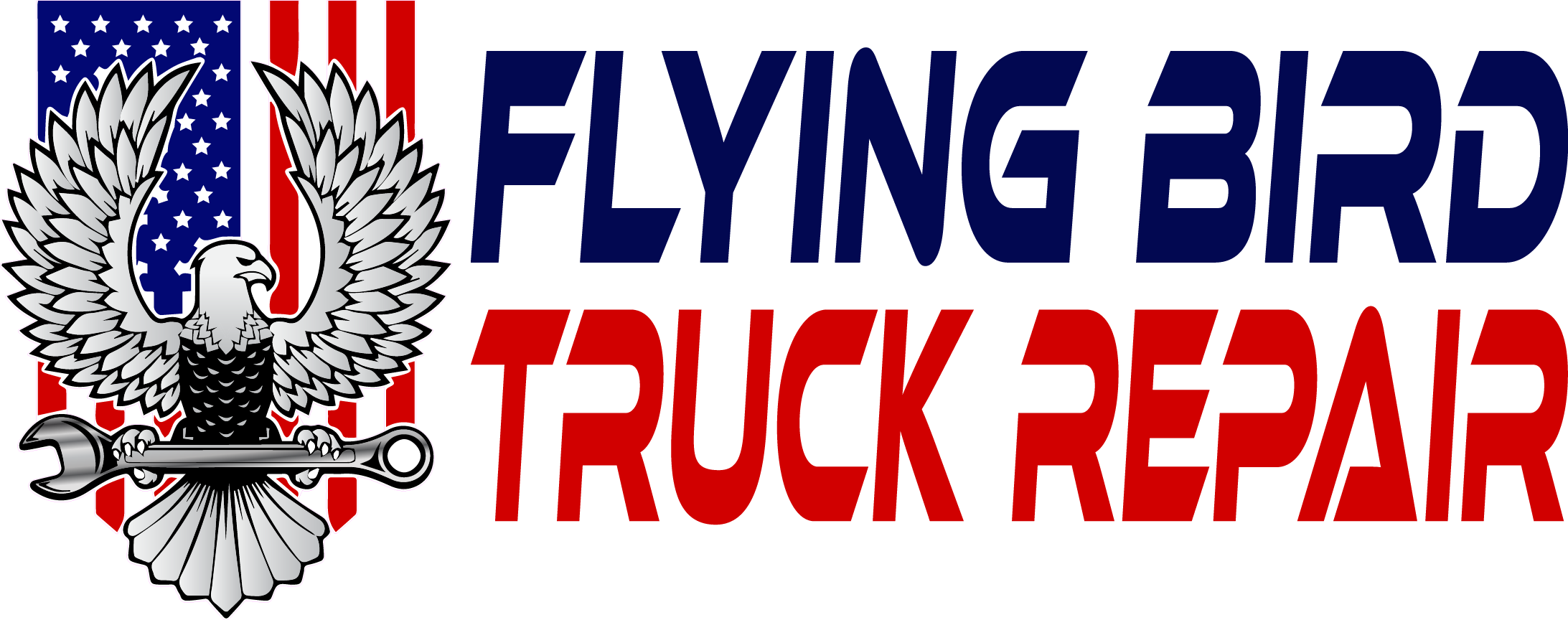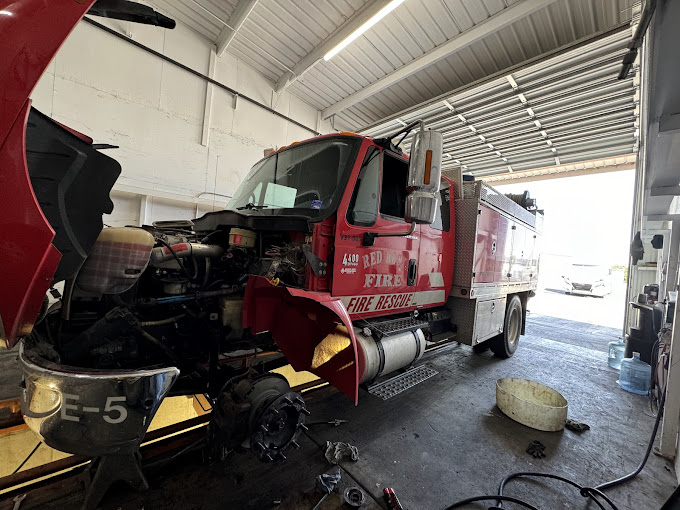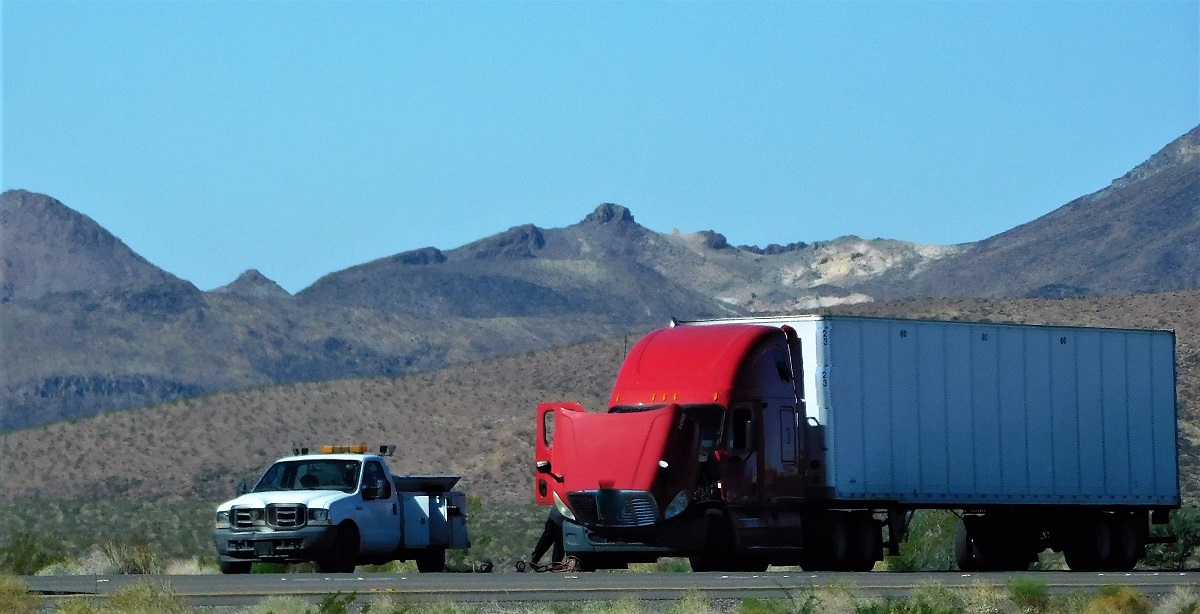The Diesel Particulate Filter (DPF) is likely familiar to everyone who drives a diesel truck. It’s a minor component of a vast job. But here’s the thing—when your DPF isn’t working right, it can lead to costly repairs, poor fuel economy, and even downtime you can’t afford. That’s why DPF maintenance isn’t something truck owners can ignore.
In this blog, we’ll break down everything you need to know about caring for your DPF—what it is, why it matters, and how to avoid expensive issues. No complicated jargon here—just simple, human-to-human advice to help you keep your truck healthy and on the road.
Why Does a DPF Matter and What Is It?
Your truck’s emission system includes your Diesel Particulate Filter (DPF). Its main job is to trap and store soot (unburned fuel particles) from your exhaust to reduce air pollution. Think of it as a kind of filter that catches the dirty stuff before it blows out the tailpipe.
Why does it matter? Because without it, your diesel truck wouldn’t meet today’s strict emissions laws. If your DPF fails or clogs, it not only reduces performance but may also result in fines or failures during inspections.
Why DPF Maintenance Is So Important
A DPF works silently in the background, but it doesn’t clean itself forever. Over time, soot builds up, and if not handled properly, it can clog the filter. That’s when DPF maintenance becomes critical.
Neglecting your DPF can lead to:
- Loss of power or fuel efficiency
- Overheating issues
- Check engine lights
- Expensive repairs or filter replacement
So, let’s go over the basics of how to avoid these issues and keep your system running clean.
How Does a DPF Clean Itself? (The Regeneration Process)
Before diving into cleaning tips, it helps to understand DPF regeneration.
The DPF has a built-in cleaning process called regeneration. It happens in three ways:
1. Passive Regeneration
This happens automatically when your truck is running at highway speeds for a while. The exhaust gets hot enough to burn off the soot naturally.
2. Active Regeneration
If you don’t drive long distances often, the truck’s system may trigger active regeneration, injecting extra fuel to heat the exhaust and burn the soot off.
3. Manual or Forced Regeneration
Sometimes, if the filter gets too full, a mechanic must manually perform a forced regen using a diagnostic tool.
Understanding these modes helps you make better driving decisions that support your DPF.
Signs of a Clogged DPF
So, how do you know your DPF might be in trouble? Look for these indicators of a clogged DPF:
- Reduced engine power or acceleration
- Increased fuel consumption
- Check engine light or DPF warning light
- Frequent regenerations
- Excessive exhaust smoke
- Hard starts or stalling
If you’re experiencing any of these, your DPF could be overloaded with soot—or worse, ash.
How and When to Clean a DPF
You can’t just spray your DPF with water or clean it like an air filter. Proper diesel particulate filter maintenance requires the right method, depending on how dirty the filter is.
Let Regeneration Do Its Job
First and foremost: support passive and active regen. If your truck starts a regen, don’t interrupt it. Let it finish. Stopping short trips or shutting off the engine too early can cause regen to fail and leave your filter half-burned.
Forced Regeneration
If passive/active regen no longer works, you’ll need a forced regen. This is done by a professional using a diagnostic tool while the truck idles.
Professional DPF Filter Cleaning
When soot turns to ash (which happens over time), regeneration won’t help. That’s when you need truck DPF filter cleaning. A shop will remove the filter and clean it using heat or compressed air. This should be done every 100,000 to 150,000 miles, depending on driving habits.
DPF Cleaning Best Practices: What Every Truck Owner Should Do
Let’s break it down into everyday steps you can take to care for your DPF system.
Drive Longer, Not Just Farther
Short city trips don’t allow your exhaust to reach the temperature needed for regeneration. Take your truck on longer highway drives regularly—at least 20–30 minutes at a time—to help with passive regen.
Use Low-Ash Engine Oil
Always use oil designed for diesel engines with DPF systems. These oils are low in sulfated ash, phosphorus, and sulfur (SAPS), which reduces ash buildup inside the filter.
Follow Scheduled Maintenance
Stick to your truck’s maintenance schedule, especially for oil changes and emissions service. Avoiding scheduled service is one of the easiest ways to clog your DPF faster.
Know When It’s Time to Clean
If your vehicle starts showing DPF-related symptoms more often, it may be time for a deep DPF cleaning.
How to Avoid Costly DPF Repairs
Let’s be real—replacing a DPF can cost thousands of dollars. But most failures are preventable. Here’s how to avoid those costs:
Don’t Ignore Warning Lights
If your DPF light comes on, it’s your truck asking for help. Don’t clear the code and ignore it. Address it before the issue gets worse.
Avoid Deleting or Tampering With the DPF
DPF deletes might seem tempting for performance, but they are illegal and come with major fines. They also reduce resale value and invalidate warranties. Not worth it.
Invest in Quality Fuel
Cheap diesel fuel can contain more contaminants, clogging your filter faster. Stick to quality fuel and consider adding a fuel conditioner in cold weather.
How Long Does a DPF Last?
With proper care, a diesel particulate filter can last 150,000 to 200,000 miles—even longer in well-maintained trucks. But that depends on how you drive and how closely you follow your DPF maintenance plan.
What About Ash Build-Up?
It’s important to note that ash build-up (unlike soot) doesn’t burn off in regen. It’s a natural byproduct of using engine oil and must be physically cleaned out during DPF service.
When ash builds up:
- Regeneration becomes less effective
- Back pressure increases
The engine works harder and uses more fuel, which is why regular cleaning is important for maintaining long-term performance.
FAQs: DPF Maintenance for Truck Owners
Q1: How often should I clean my DPF?
You should have it professionally cleaned every 100,000 to 150,000 miles, depending on usage. More frequent service may be needed for trucks with heavy-duty or city-driving cycles.
Q2: Can I clean the DPF myself?
Manual cleaning should only be done by professionals. Using home methods, such as a pressure washer, can damage the filter. However, you can support cleaning by ensuring regeneration completes fully.
Q3: What happens if I don’t maintain my DPF?
Neglecting DPF maintenance can lead to:
- Clogged filters
- Reduced fuel economy
- Loss of power
- Expensive repairs (or full replacement)
- Failed emissions tests
Q4: Is it illegal to remove the DPF system?
Yes. Removing or tampering with DPF systems violates EPA laws and can result in hefty fines, especially for commercial trucks. Always maintain compliance.
Q5: What can I do daily to help my DPF?
- Let regeneration finish
- Use the right oil and fuel
- Take your truck for longer highway drives
- Watch for early signs of a problem
- Keep up with truck DPF filter cleaning services
Conclusion: Take Care of Your DPF, and It’ll Take Care of You
Your DPF might not be something you think about every day, but it plays a huge role in your truck’s performance, longevity, and legal compliance. It also requires maintenance, just like any other crucial component of your engine.
With simple steps like supporting regeneration, recognizing the signs of a clogged DPF, and scheduling regular cleaning, you can avoid breakdowns, save money, and stay on the road longer.
At the end of the day, DPF maintenance isn’t just about emissions—it’s about protecting your investment, running your truck smarter, and avoiding downtime you can’t afford.
If you’re not sure when your filter was last cleaned or if your truck is due, it’s time to schedule a truck DPF filter cleaning with your trusted repair shop. A clean filter results in a clean engine, which will make your trip more comfortable.




